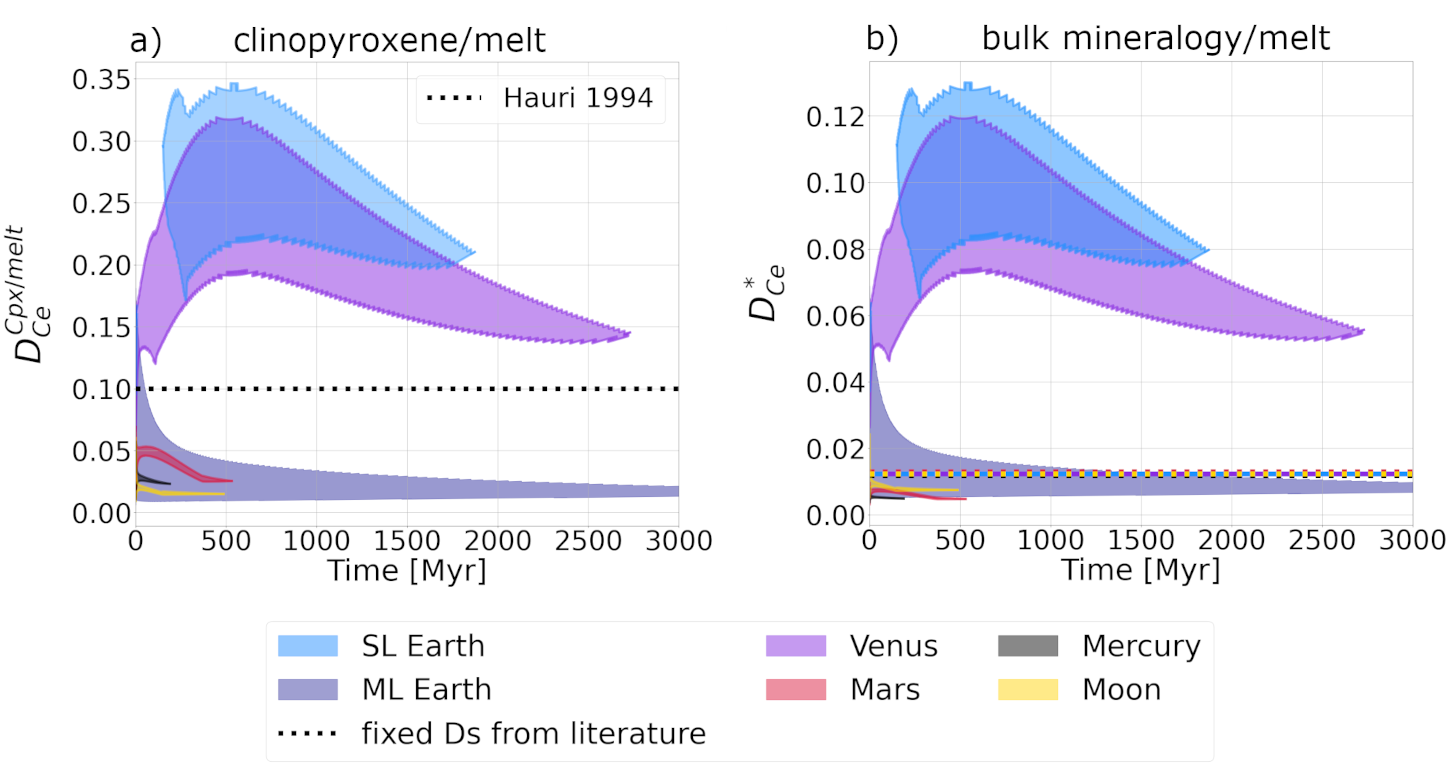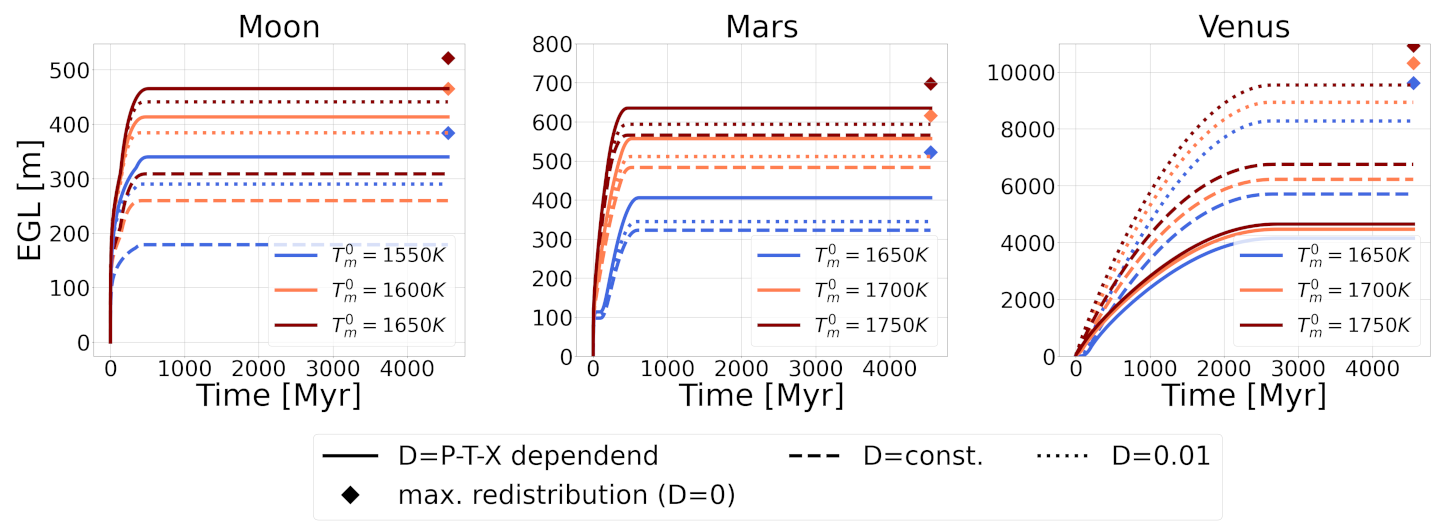Redistribution of trace elements from the mantle towards the crust in rocky planetary bodies and implications for the thermo-chemical evolution and outgassing
- Institute of Geological Sciences, Freie Universität Berlin, Berlin, Germany (julia.schmidt@fu-berlin.de)
After the magma ocean phase of a rocky planetary body, global partial melt zones contribute significantly to the formation of a planet’s secondary crust. During the partial melting inside the upper mantle, trace elements and volatiles that are incompatible with the surrounding mantle rock are redistributed from the solid into the liquid material. If the melt is buoyant, it will rise up towards the surface, resulting in an enriched crust and depleted upper mantle.
The quantity of the redistributed elements can be determined by mineral/melt partition coefficients (D), which are a measure of the compatibility of an element inside a crystal lattice. Generally, partition coefficients are dependent on pressure, temperature, and composition. Since there is a lack of both, high-pressure experiments and models, older mantle evolution models usually take their values as either a constant value from the literature or a constant assumed model value. For example, as an assumed model value for water, mantle evolution models often choose a partition coefficient of D=0.01.
In this study, we applied a partition coefficient model that is applicable to higher upper mantle pressures (Schmidt and Noack 2021) to a thermo-chemical evolution model for rocky planets. We found that mineral/melt partition coefficients 1) inside a partial melt zone of a rocky planet and 2) between the melt zones of different planetary bodies can change up to one order of magnitude, sometimes reaching even two orders of magnitude (Figure 1, Schmidt et al. 2024). We investigated the influence of these finding on the redistribution of heat producing elements (HPE) and water and evaluated their effect on the thermal evolution and outgassing of a planet (Figure 2, Schmidt et al 2024).
Further studies on the inclusion of partition coefficients into interior evolution models for stagnant lid planets show that there is a linear correlation between partition coefficient and planet size. This, in turn, has an especially large impact on the redistribution of water and outgassing into the atmosphere of super-Earths (Schmidt and Noack, 2024).
Schmidt, J.M. and Noack, L. (2021): Clinopyroxene/Melt Partitioning: Models for Higher Upper Mantle Pressures Applied to Sodium and Potassium, SysMea, 13(3&4), 125-136.
Schmidt, J.M., Vulpius, S., Brachmann, C., Noack, L. (2024): Redistribution of trace elements from mantle to the crust in rocky solar system bodies, to be submitted.
Schmidt, J.M., Noack, L. (2024): Planet mass controls the mineral/melt partitioning of trace elements in the upper mantle of rocky planets, in preparation.

Figure 1: Range of mineral/melt partition coefficients for Cerium inside global partial melt zones of modeled solar system rocky bodies. All bodies are assumed to be in a stagnant lid tectonic regime, except ML Earth, which we model as a mobile lid regime planet (Schmidt et al. 2024, to be submitted).

Figure 2: Equivalent Global layer thickness variations for Moon, Mars, and Venus. The EGL describes a hypothetical scenario if all outgassed water condensed into an ocean. It is highly dependent on the amount of redistributed water towards the crust (Schmidt et al. 2024, to be submitted).
How to cite: Schmidt, J. M. and Noack, L.: Redistribution of trace elements from the mantle towards the crust in rocky planetary bodies and implications for the thermo-chemical evolution and outgassing, Europlanet Science Congress 2024, Berlin, Germany, 8–13 Sep 2024, EPSC2024-541, https://doi.org/10.5194/epsc2024-541, 2024.